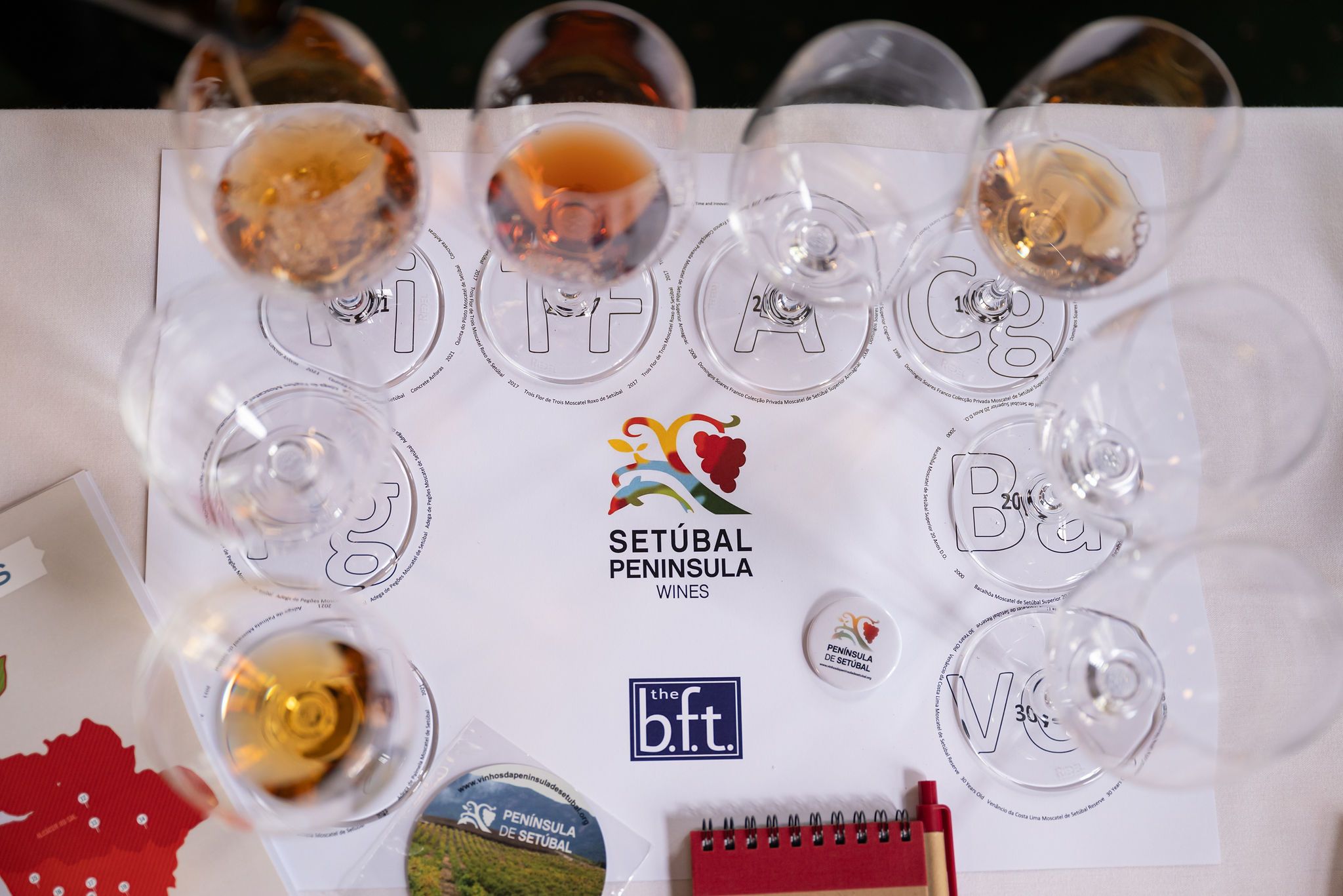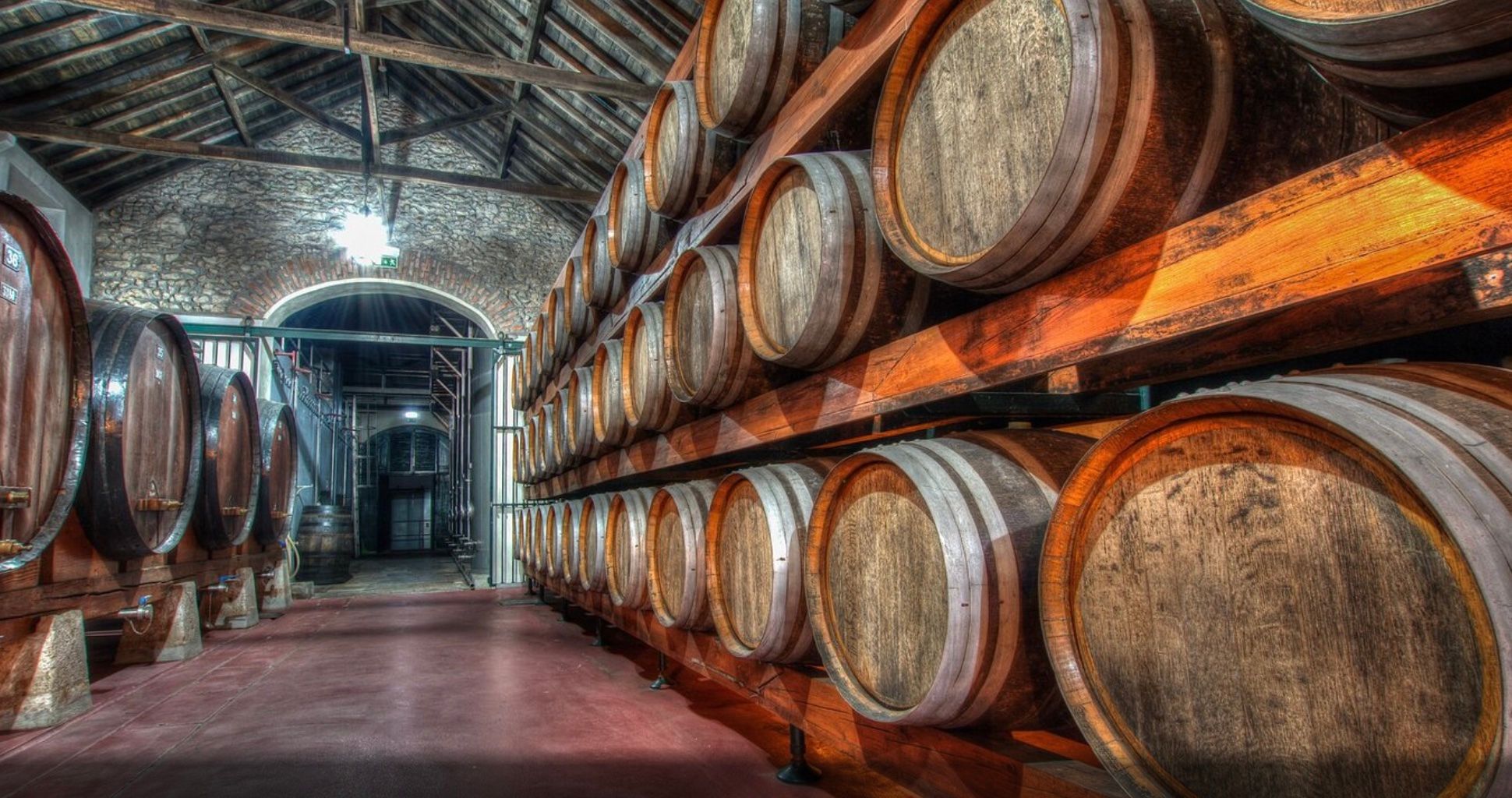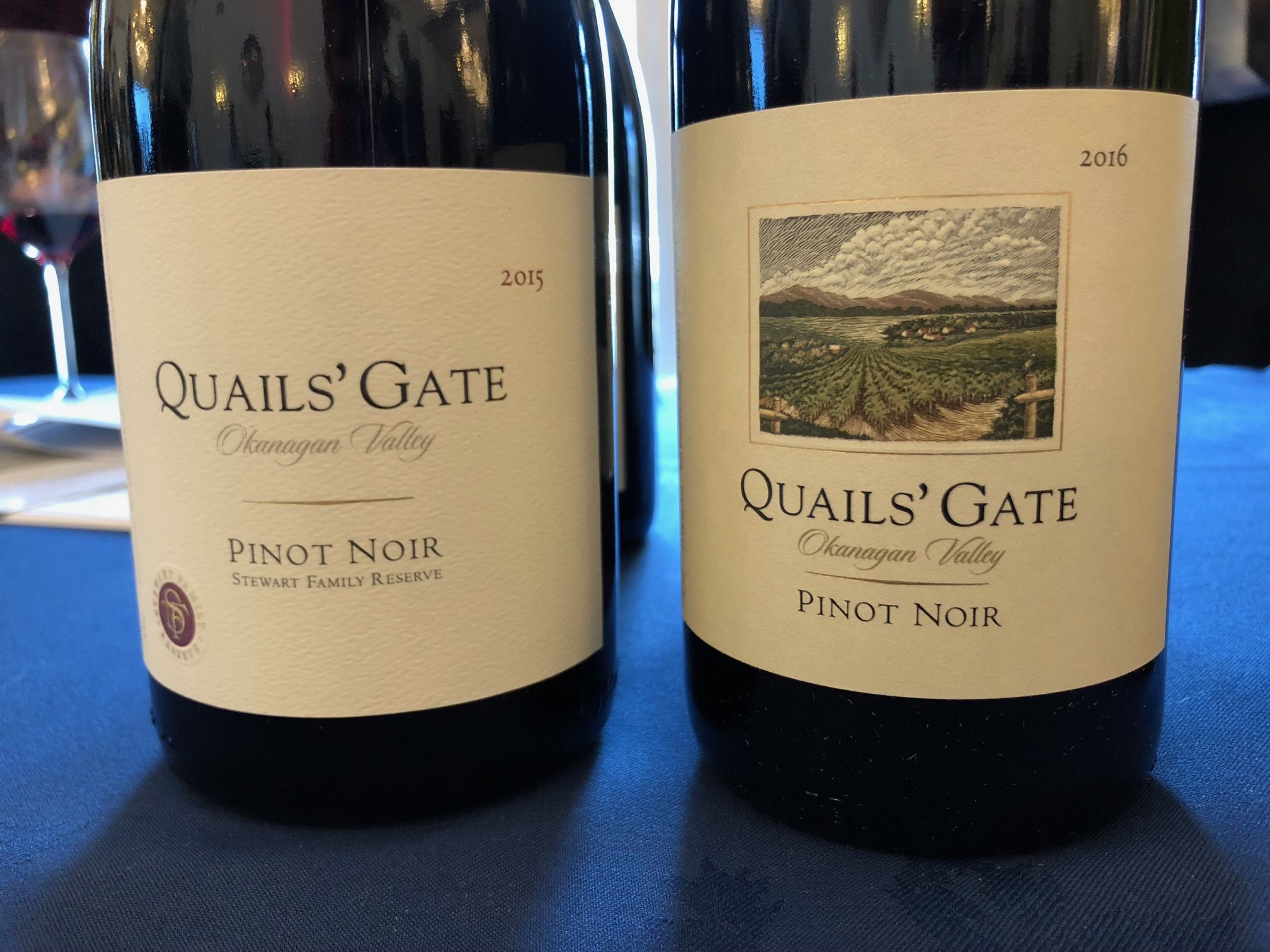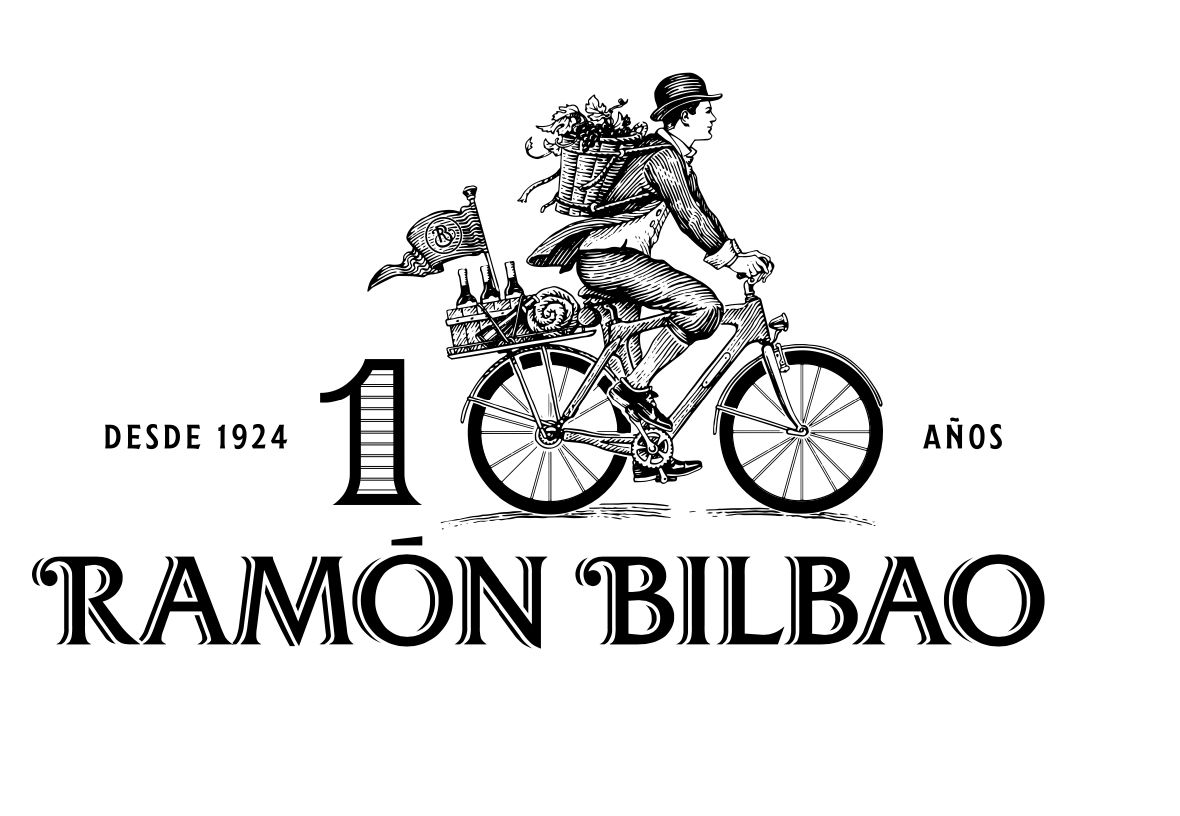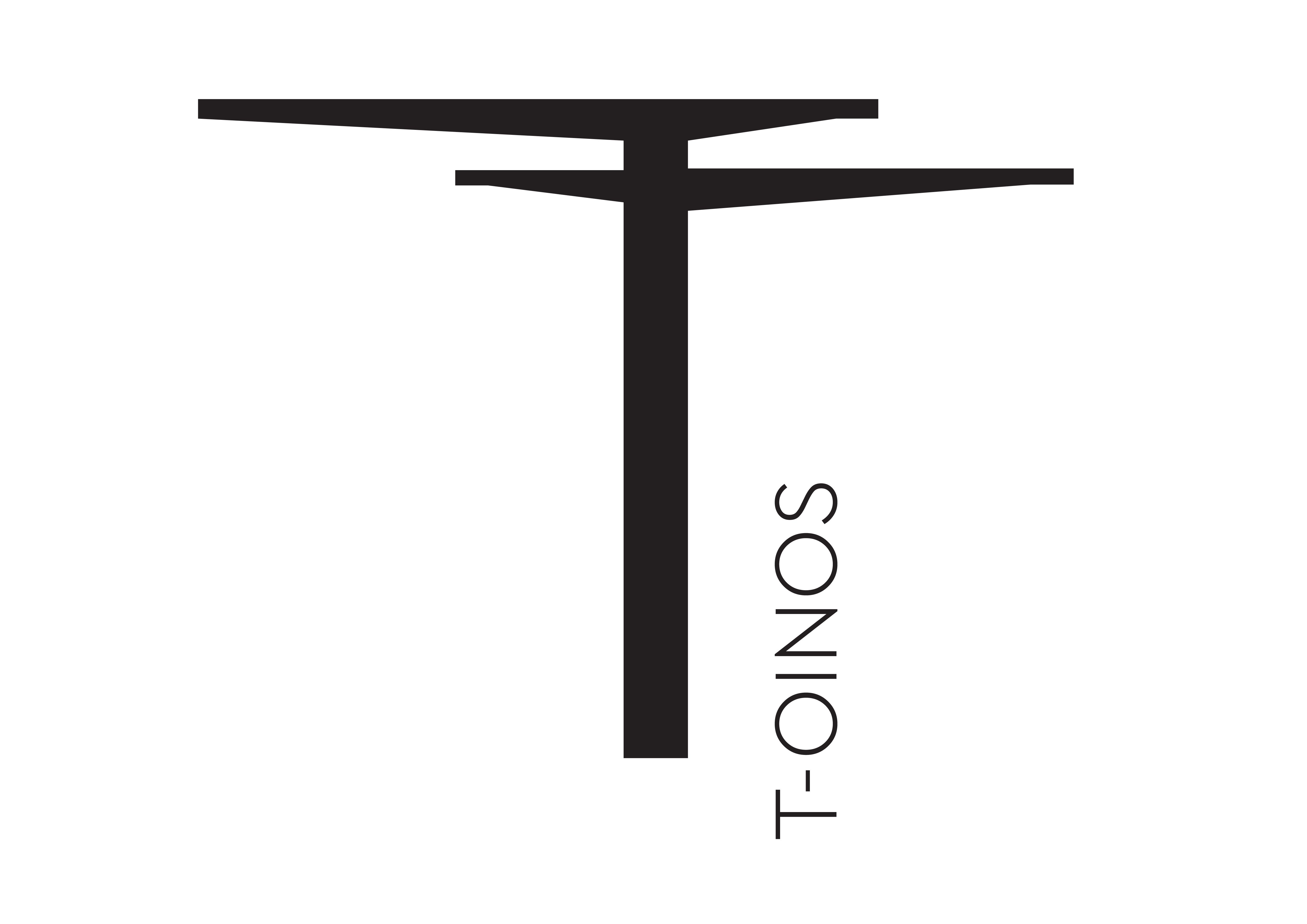As someone who teaches fortified wines regularly at WSET and remains unapologetically enthusiastic about them, I can’t help but lament that, in the UK, they are largely confined to two appearances: Christmas tables and the dreaded blind tastings for MW and WSET Diploma exams. Students frantically sip through Port and Sherry, then move on to Madeira and Vin Doux Naturel, trying to memorise the key flavour profiles. Even the rare Rutherglen Muscat from the other side of the world gets its mention in the WSET textbooks. But Moscatel de Setúbal – the wine once drunk by King Richard II – remains the quiet cousin at the family gathering: elegant, expressive, and inexplicably overlooked.
Which begs the question: why isn’t this remarkable wine better known? The mystery deepens when you realise just how far back its story goes.
Liquid legacy: the unique history of Moscatel de Setúbal
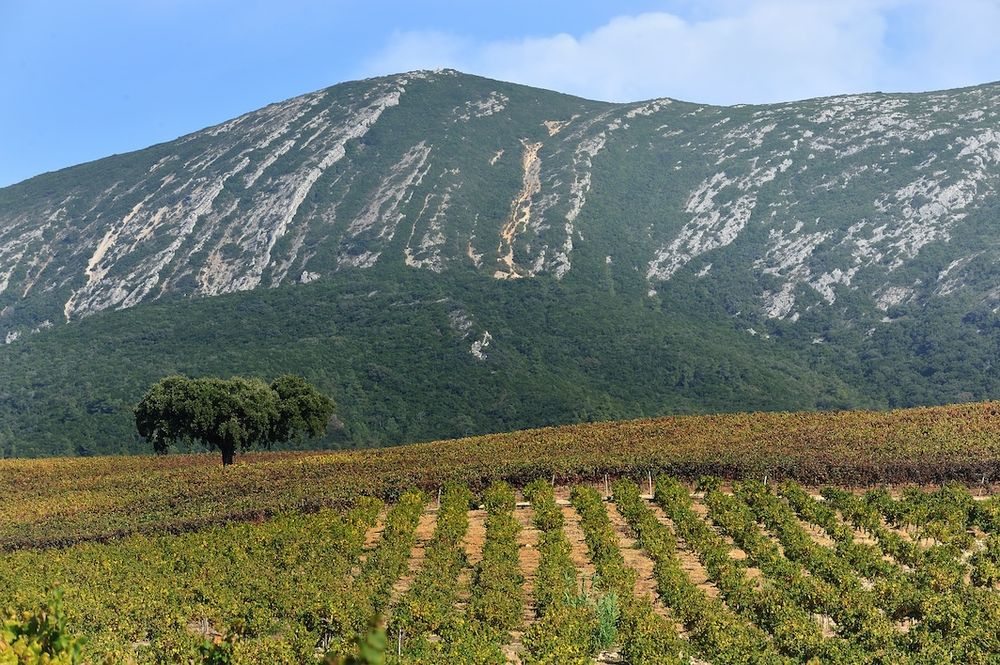
Arrábida Mountains © Setubal Peninsula Wines
Step onto the Setúbal Peninsula, just south of Lisbon, and you step into liquid history. Its origins may reach back to the Phoenicians, who sailed the Sado and Tagus estuaries as early as the 8th century BC.
By the time King Dinis was laying the foundations of modern Portugal, Moscatel de Setúbal was already being made. By the 14th century, it was gracing English banquets and even earned a mention from King Richard II.
It reached a shimmering high at the court of Louis XIV, where it was lauded as everything from “a national glory” to “sun in a bottle.” And its rarer sibling, Moscatel Roxo, wasn’t left behind – 19th-century French connoisseurs deemed it the “quintessence of muscatels.” These weren’t just poetic accolades either: the wine took gold at the 1855 Paris Universal Exhibition.
So, what makes Moscatel de Setúbal so special? Why is it still so under the radar for most UK drinkers? And perhaps most importantly: how do we uncork its magic beyond the usual holiday pour or syllabus tick-box?
Let’s start with the geeky part.
Moscatel de Setúbal in a nutshell
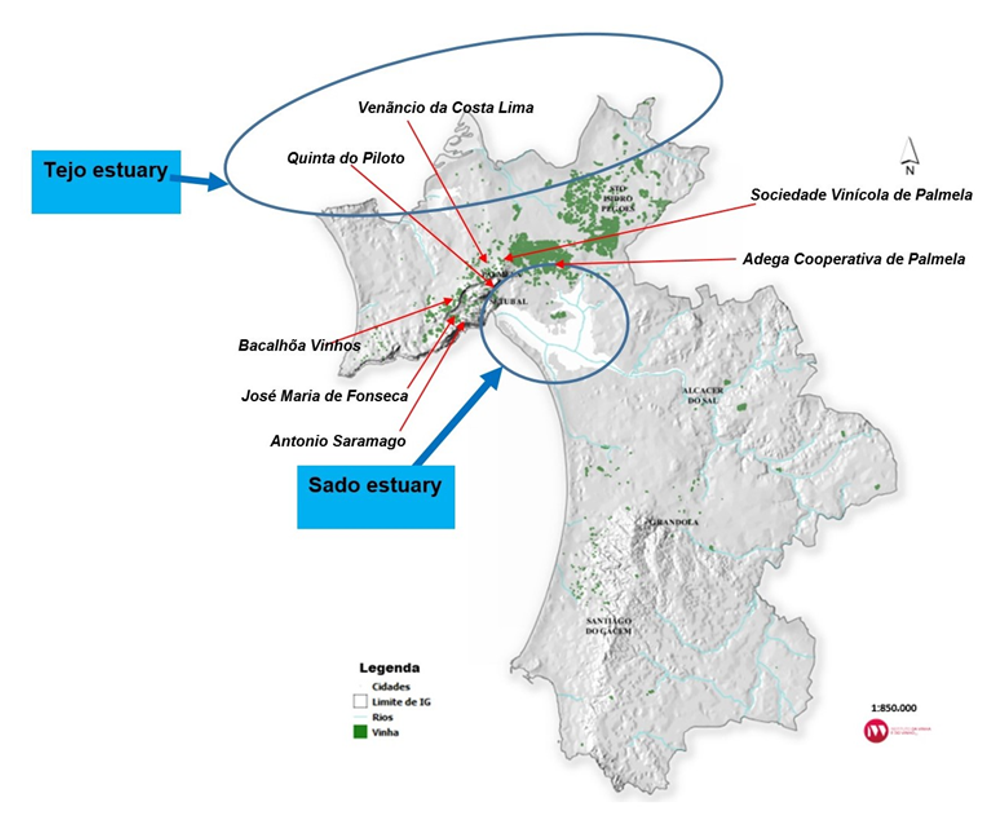
To qualify as Moscatel de Setúbal, grapes must come from the Setúbal Peninsula, just 40 km south of Lisbon. The region’s Mediterranean climate is shaped by the Arrábida Mountains, which create a maritime microclimate ideal for slow ripening. This results in fresher, more aromatic wines. Clay-limestone soils boost vibrancy, while the mountains block Atlantic winds, letting cooler northern breezes through. To the east, sandy soils on the plains yield sweeter, more concentrated wines with an earlier harvest.
The region's focus is Moscatel de Setúbal (Moscatel de Alexandria, 653 ha), with a niche for the rarer Moscatel Roxo de Setúbal (a cousin of Moscatel Blanc á Petits Grains, but with pink berries, a natural mutation, 63 ha).
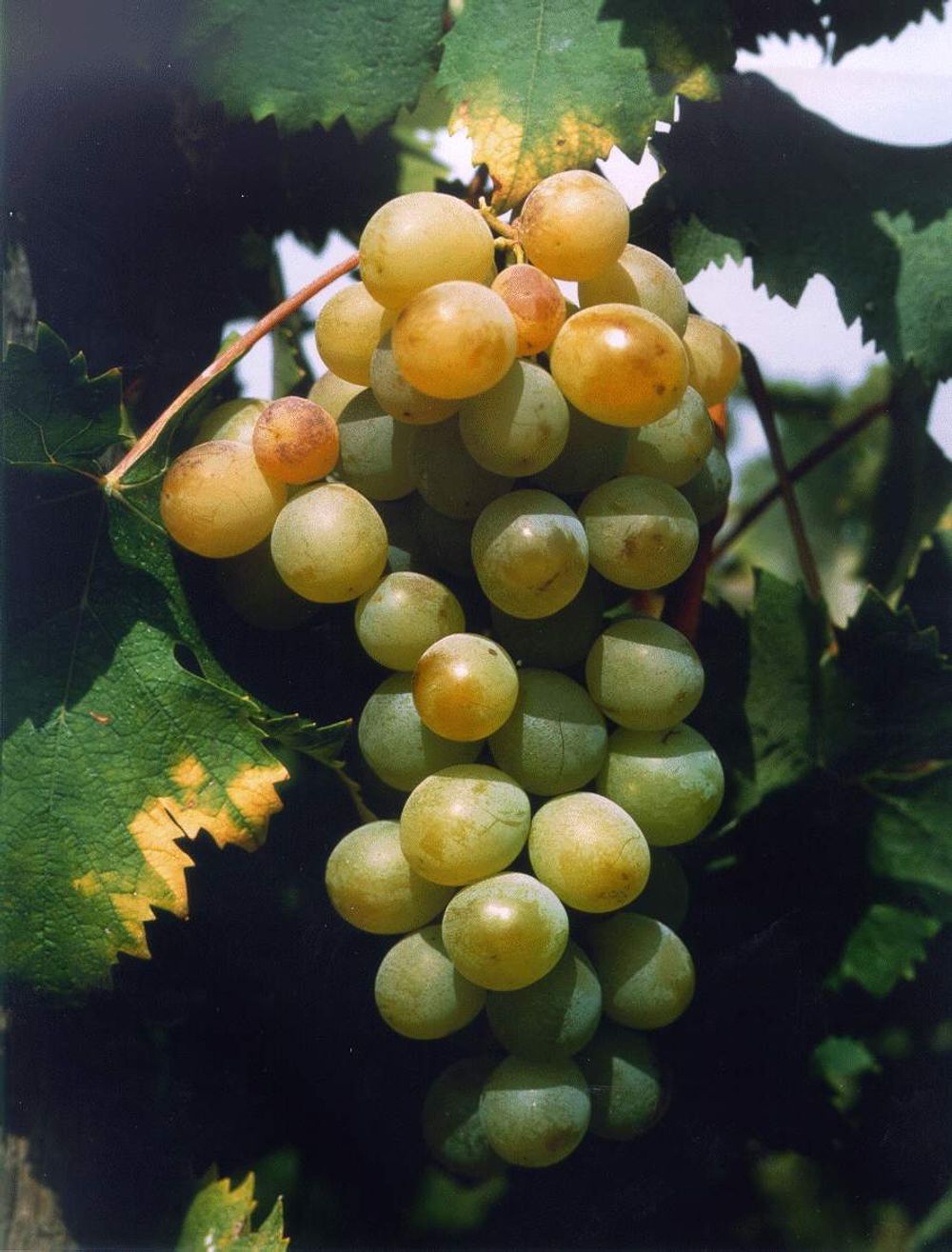
Moscatel de Setúbal © Setubal Peninsula Wines
Harvest usually starts in late August, slightly earlier for Roxo to preserve acidity. Grapes are de-stemmed and crushed, with fermentation on skins halted by neutral grape spirit or aguardente (52–96% abv). A long maceration follows – minimum three months, often up to eight – before pressing and filtration. The wine then ages for at least 18 months in stainless steel or oak for Moscatel de Setúbal (36 months for Moscatel Roxo de Setúbal). Age statements on bottles reflect the youngest wine in the blend: a 10-Year-Old must include nothing younger than 10 years.
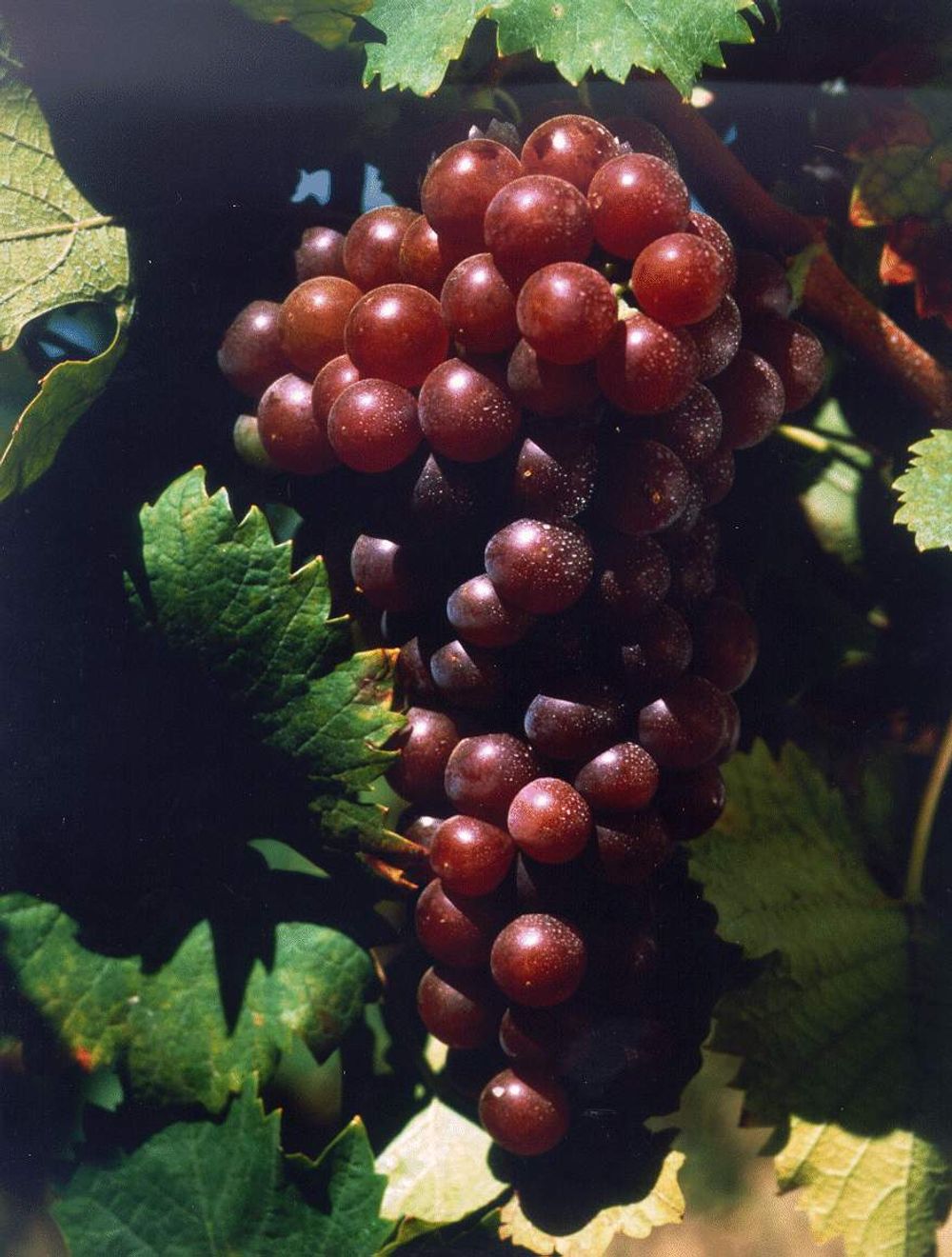
Moscatel Roxo © Setubal Peninsula Wines
Finished wines typically weigh in at 16–22% abv (most in the markets are between 17% and 19%) with residual sugar from 100 g/L to 223.3 g/L. The DO caps sugar at 280 g/L for wines up to 20 years old and 340 g/L beyond that.
The USP of Moscatel de Setúbal
For Filipe Cardoso, winemaker at Quinta do Piloto and a fourth-generation member of a winemaking family, the true distinction of Moscatel de Setúbal lies in its unique combination of terroir, tradition, and winemaking expertise. Unlike other fortified Muscat wines, Setúbal’s expression is shaped by the region’s proximity to the Atlantic. Cardoso highlights the salty winds and oceanic influence, which he says are crucial to the wine’s distinctive profile.
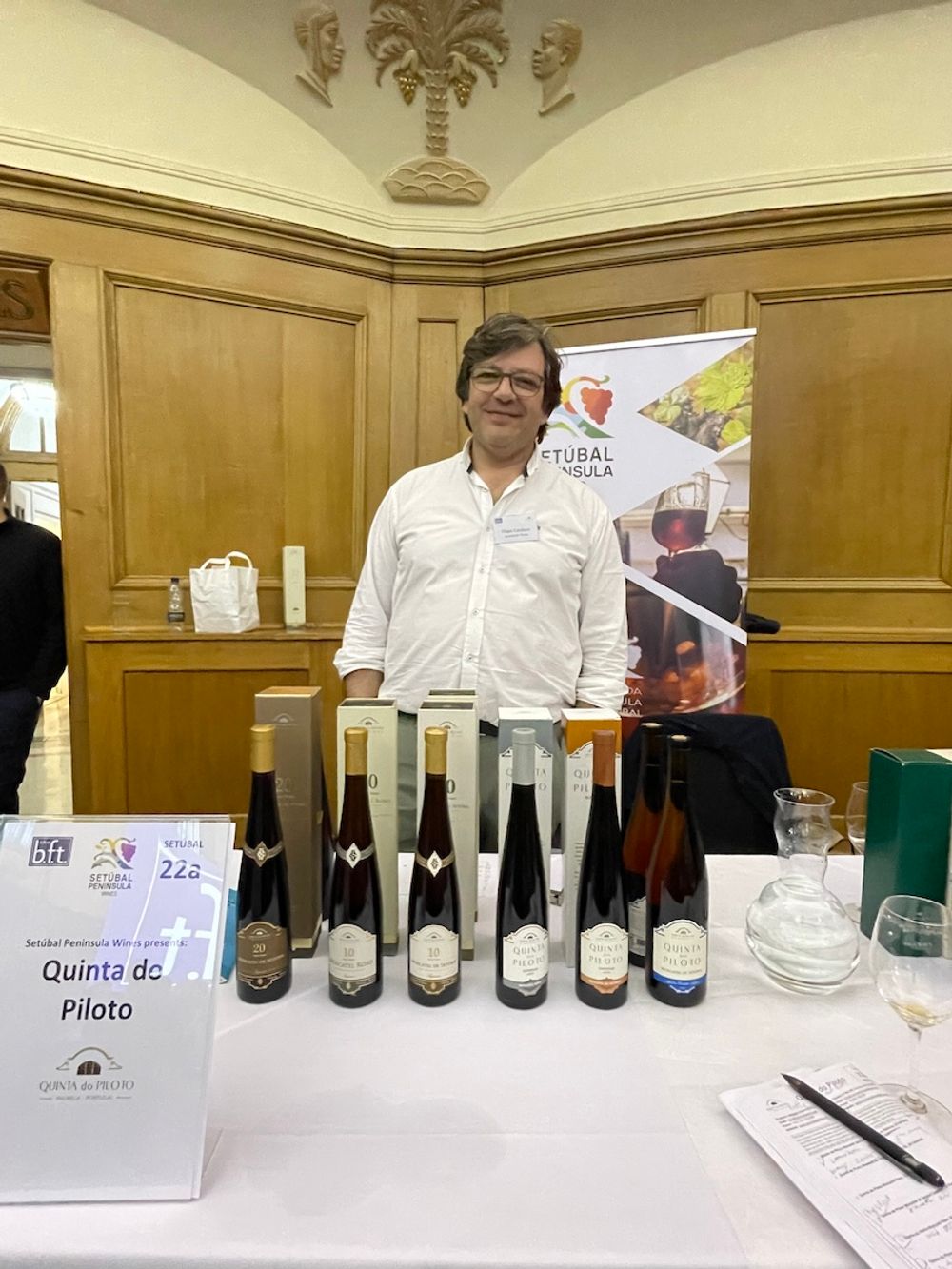
“We are the only region in the world making Moscatel with long skin contact.” Filipe Cardoso.
Setúbal also benefits from over a century of Moscatel production, with old stocks lending remarkable depth and complexity to the wine. But what truly sets Setúbal apart is its extended skin contact. As Cardoso points out, “We are the only region in the world making Moscatel with long skin contact.” This technique imparts a richness and intensity found nowhere else.
The fact that a relatively small region produces two distinct styles – Moscatel de Setúbal and Moscatel Roxo – each with its own unique characteristics, and you begin to understand why this region stands in a league of its own.
Moscatel’s secret weapon: the mother
During the masterclass, Cardoso let slip Setúbal’s secret weapon: “the mother.” “It’s like the well-seasoned pan behind Portugal’s best bifana steak sandwich in Vendas Novas – never fully cleaned, always layered with flavour,” he says. Similarly, most Moscatel de Setúbal winemakers never empty their barrels completely, leaving behind a few fingers of old wine – the mother – sometimes over a century old.
This aged remnant fuses with younger wines, adding layers of complexity and character. It’s a quiet, sacred technique and the secret to Setúbal’s soul, according to Cardoso.
Old style, new trends
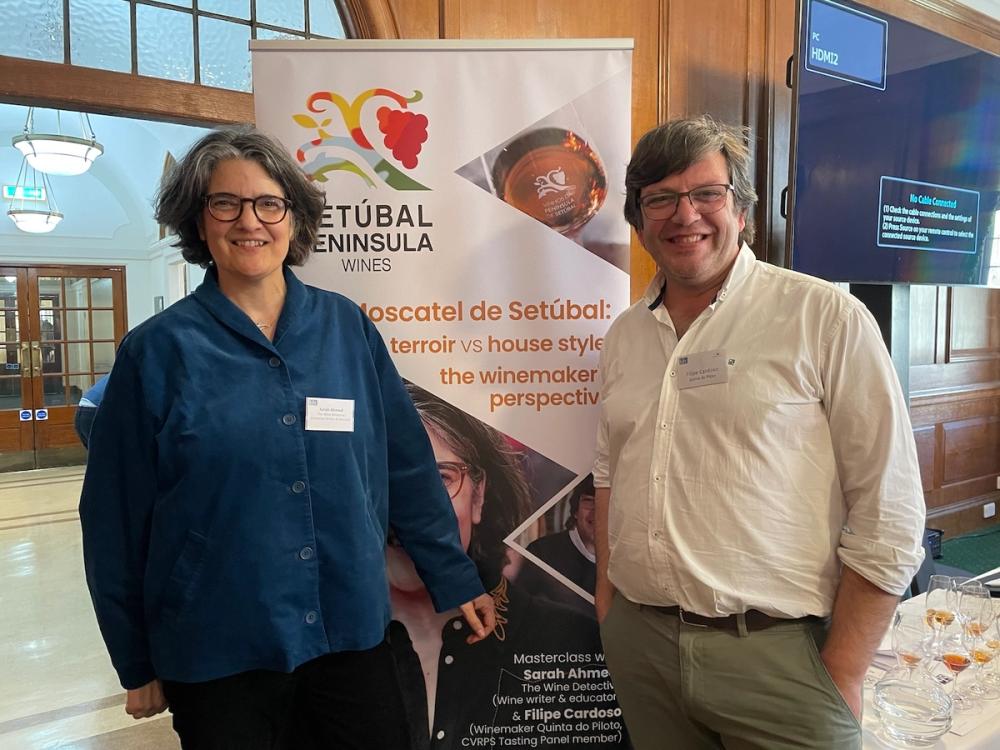
"More are releasing mature Moscatels with real personality.” Sarah Ahmed and Filipe Cardoso
Although Setúbal’s DO was founded in 1908, age classifications came much later: 10- and 20-Year-Olds in 1992; 30- and 40-Year-Olds only in 2014. This shift marked a move toward premiumisation – showcasing just how Moscatel transforms over time.
During the masterclass led by Portuguese wine expert Sarah Ahmed and Cardoso, the spotlight was on the 10-Year-Olds – "the bridge between youthful styles and the classics” Ahmed explained. These wines retain citrus brightness and floral lift but begin to reveal savoury depth and oxidative complexity. Yet they account for just 2% of production. “No one used to age Moscatel in cellars to sell later,” Cardoso explains, with the market long dominated by major players like Bacalhôa and José Maria da Fonseca.
That changed in the 2000s as smaller producers began ageing and bottling their own stocks. “Now more are releasing mature Moscatels with real personality,” says Cardoso.
Ahmed sees strong UK potential. With aged tawny Ports booming, older Moscatel de Setúbal is poised to follow – offering an easy to understand single-varietal, exuberantly aromatic white fortified wine full of charm. Where Port blends red grapes and Madeira leans into searing acidity, aged Moscatel brings richness, elegance, and a fresh, distinctive voice to the world of fortified wines.
How to identify Moscatel de Setúbal in a blind tasting
Cardoso, a long-time member of the Península de Setúbal’s tasting panel, has seen the evolution of Moscatel first-hand. “When young, Moscatel de Setúbal is rich, exuberantly fruity, and sweet but always lifted by vibrant acidity,” he explains. Expect bright citrus, especially orange and lemon, with floral tones. As it ages, the transformation is dramatic: crystallised orange peel, toasted nuts, dried fruits, and, in very old examples, spice notes like curry. That aromatic development is part of the wine’s enduring charm.
From a wine educator’s point of view, I look for certain key markers. Even young styles show a pale amber hue due to extended skin contact and ageing. Compared to Muscat à Petits Grains, this Muscat of Alexandria variety is less overtly grapey or floral but always marked by refreshing acidity – a result of early harvesting to maintain balance. Aged Moscatel de Setúbal turns deep brown, while its rarer sibling, Moscatel Roxo, with its purple skins, becomes tawny over time. Roxo also shows more body, greater phenolic grip, and often feels sweeter in comparison – another blind tasting clue.
When to drink it
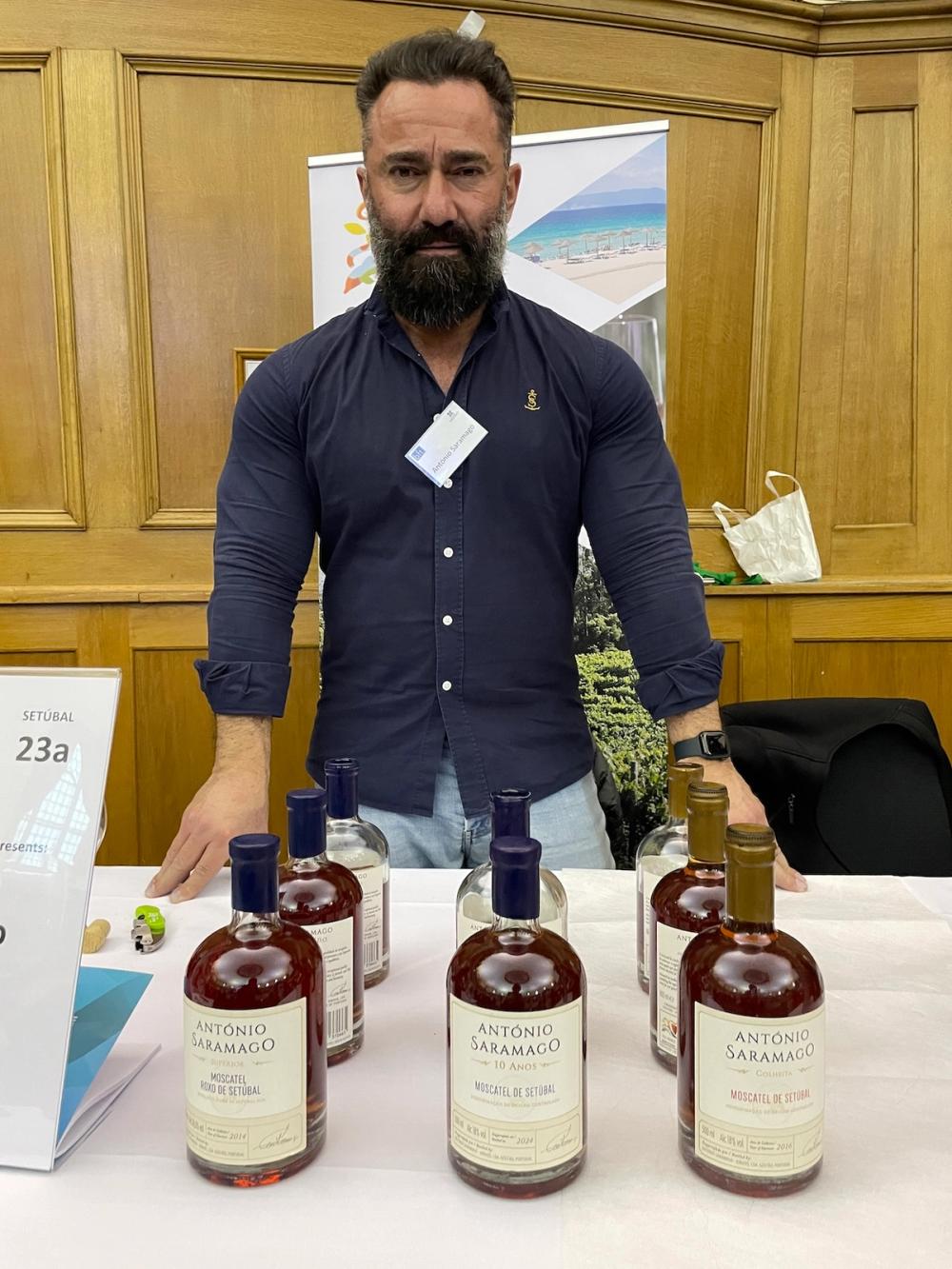
António Saramago advocates pairing the wine with savoury foods
After the masterclass and tasting at different producer’s stands, one thing became clear: Moscatel de Setúbal’s quality is undeniable. As Ahmed put it, “This is one grape variety that’s aromatic and much easier to understand.” With young bottles starting around £10 and aged classics from £20 upwards, it’s also a bit of a bargain.
The challenge? Creating more moments to drink it.
Producers agree, and many mentioned food pairings. Young wines, served chilled (10°C as an aperitif, 16°C for dessert), pair well with citrus desserts, chocolate, nutty snacks, or salty cheeses like Azeitão. Classic, aged styles shine alongside foie gras, strong cheese, crème brûlée, nutty cakes, or dark chocolate. As digestifs, they offer a lower-alcohol alternative to spirits like aged rum or Armagnac – particularly satisfying with a cigar.
That said, winemaker António Saramago warns against pigeonholing: “People often think sweet wine means dessert. It’s not wrong – but it’s not the best match either.” He recommends experimenting more with savoury foods – where the wine’s acidity and sugar balance fat and salt.
Ahmed offers a different perspective, dubbing Moscatel “the slacker’s dessert wine” – easy to keep open in the cupboard, perfect with a bar of chocolate. Cardoso even makes his own chocolates with Moscatel, and some pastel de nata producers spike their custard with it. “But why not try it with Japanese tempura?” she suggests. Some producers also mentioned cocktails, though the general consensus was to limit this to the younger styles.
Size matters
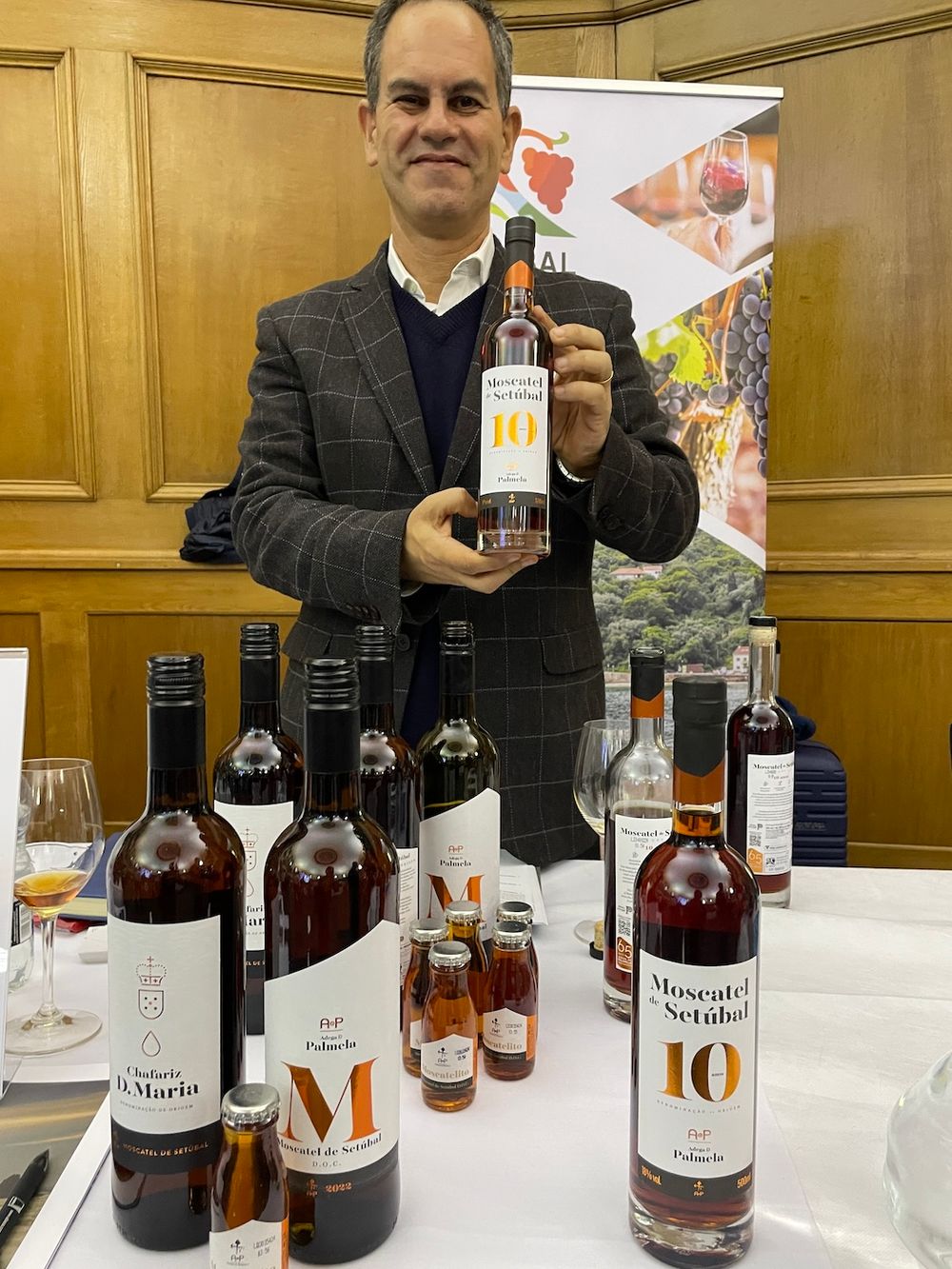
Mário Cravidão may have cracked the size issue with a 60ml bottle
One barrier to wider appeal may be bottle size. While most classic wines – due to their rarity – are available in 500ml formats, young Moscatel largely remains in 750ml bottles. Maria Barros from José Maria da Fonseca says that requests for half-bottles from importers are rising, but for them, cost remains a hurdle.
Mário Cravidão from Adega de Palmela may have cracked it. He handed me a 60ml “Moscatelito” mini and cited staggering figures: “We produce around 3 million bottles of this in 50-unit packs. The total production of mini bottles in Portugal, including Moscatel, Vermouth, and Martini, is 100 million bottles a year. With a population of 10 million; do the maths,” he laughs. “For Moscatel alone, the production from Setúbal and Douro combined is 30 million bottles,” he continues.
Cravidão added that it’s hugely popular among younger drinkers as an aperitif – not in cocktails, but straight up, while socialising with friends and enjoying an “aperitif moment” in a café.
Whether that trend travels to the UK remains to be seen – but single-serves might just offer a practical route to discovery.
The bottom line
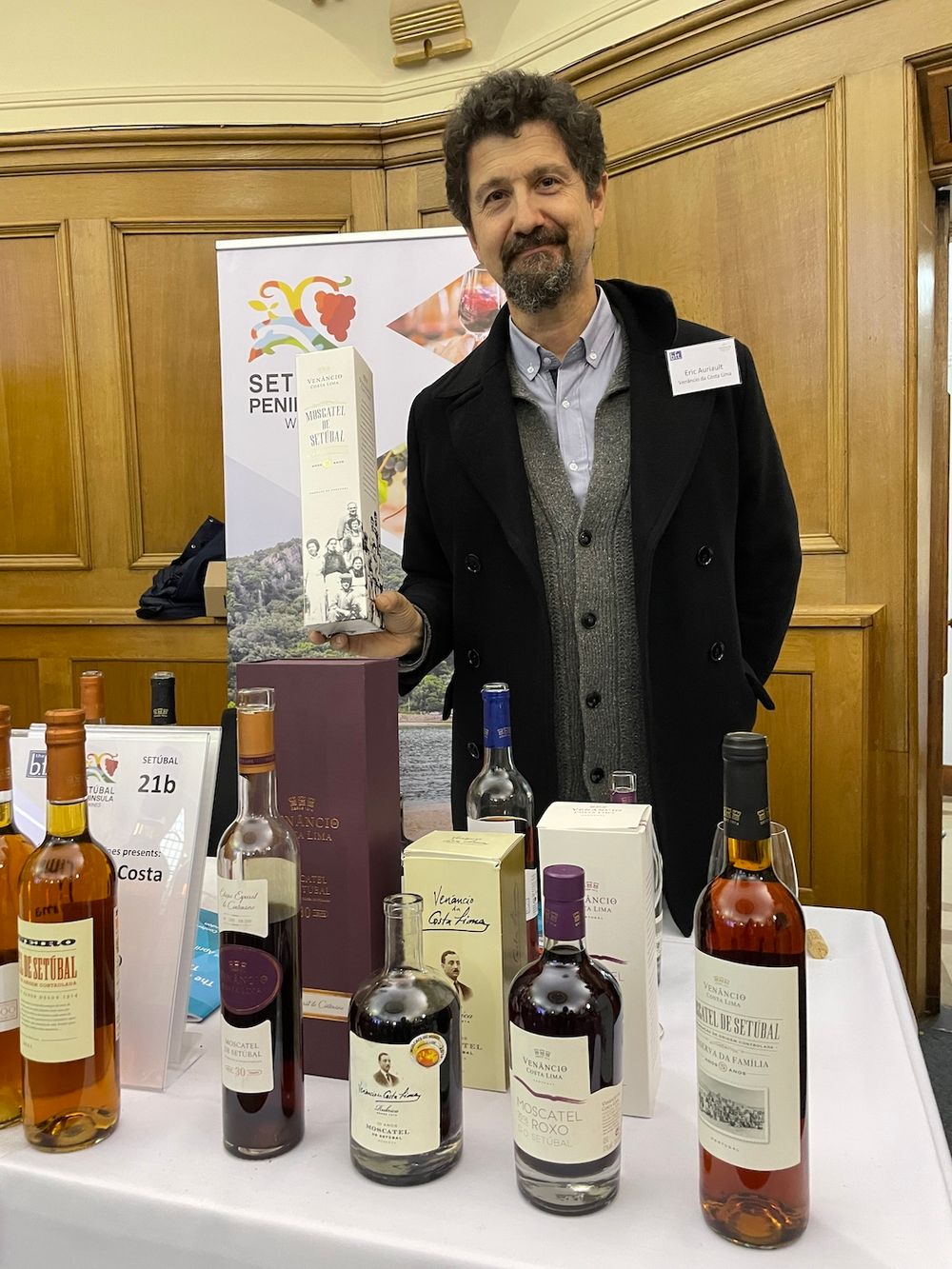
"It's impossible to make a bad wine here." Eric Auriault
As Eric Auriault from Venâncio Costa Lima puts it: “The problem with fortified Muscat is the bad ones – those without enough acidity. If someone’s tried a dull, flabby Muscat, they’re unlikely to go back.” But Setúbal? “It’s impossible to make a bad one here,” he concludes, as the terroir, the tradition, and the Atlantic influence ensure that even entry-level Moscatel has real class, and the best are utterly unforgettable.
10-Year-Old Moscatel de Setúbal masterclass tasting notes
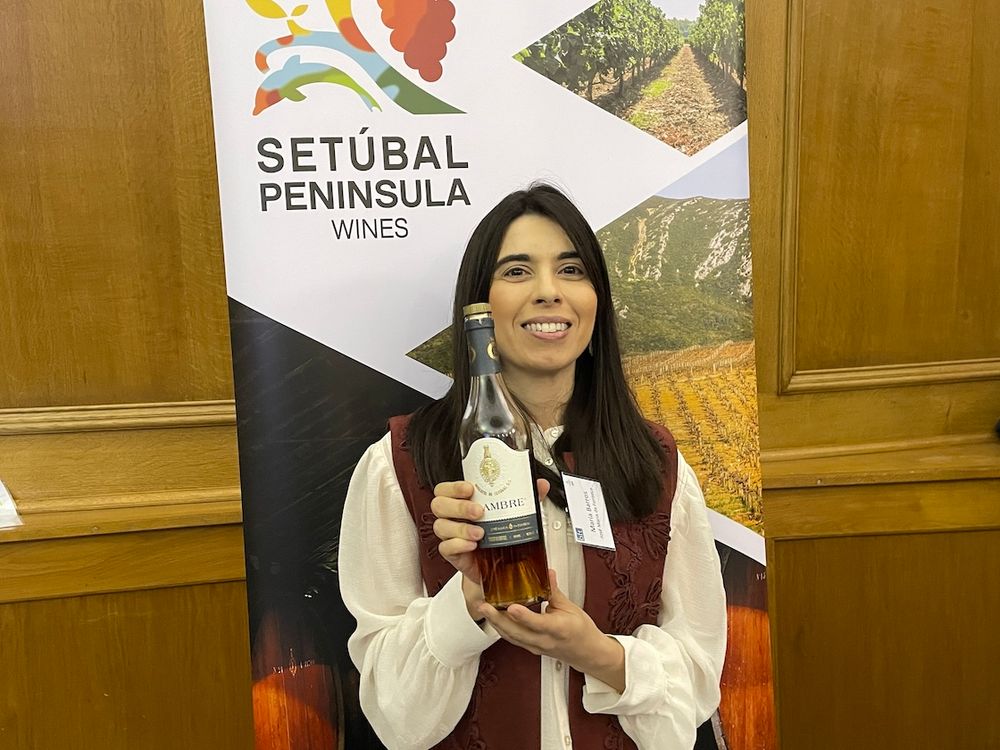
Maria Barros from José Maria da Fonseca
José Maria da Fonseca João Pires Moscatel 10 Anos
From clay-limestone soils in Serra da Arrábida (115m), this wine is fortified to 18.5% abv (77% aguardente) after a 3-month maceration. Aged over 10 years, without topping up, in large old casks and 600L oak, the blend includes vintages spanning 12 to 40 years (RS 150 g/l, TA 4.2 g/l).
Pale amber, it shows expressive aromas of orange peel, marmalade, and nutty hints lifted by grapefruit brightness. A touch of spirit heat is present, but balanced by freshness and a salty edge, culminating in a lingering caramel finish.
RRP £28.00 (75cl) | Seeking distribution
António Saramago Moscatel de Setúbal 10 Anos (2013)
A single-vintage 2013 wine from Azeitão (250m, limestone), fortified to 18.09% abv (96% neutral spirit) after an extended 6-month maceration. Aged for over a decade, without topping up, in 300L used French Limousin oak and matured “on mother” (RS 178.3 g/l, TA 6.76 g/l).
Medium amber with a touch of sediment, it bursts with candied orange peel, vanilla, spice, and marmalade. Concentrated yet strikingly fresh acidity gives precision and balance.
RRP €35.00 (50cl) | Seeking distribution
Quinta do Piloto Moscatel de Setúbal 10 Anos Superior
A blend of 80% high-altitude Serra da Arrábida fruit (200m) and 20% coastal sandy soils. Fortified with 77% aguardente after 8 months' maceration and aged in 100-year-old 100L chestnut casks with annual topping. The blend combines 2010 and 2012, plus a touch of 2002 (RS 180 g/l, TA 5.91 g/l).
Pale amber with intense rancio character, showing smoky nuttiness, banana skin, fresh almond, and marmalade. Elegant yet rich, with subtle grip and vibrant balance.
RRP £50.00 (50cl) | Imported by Raymond Reynolds
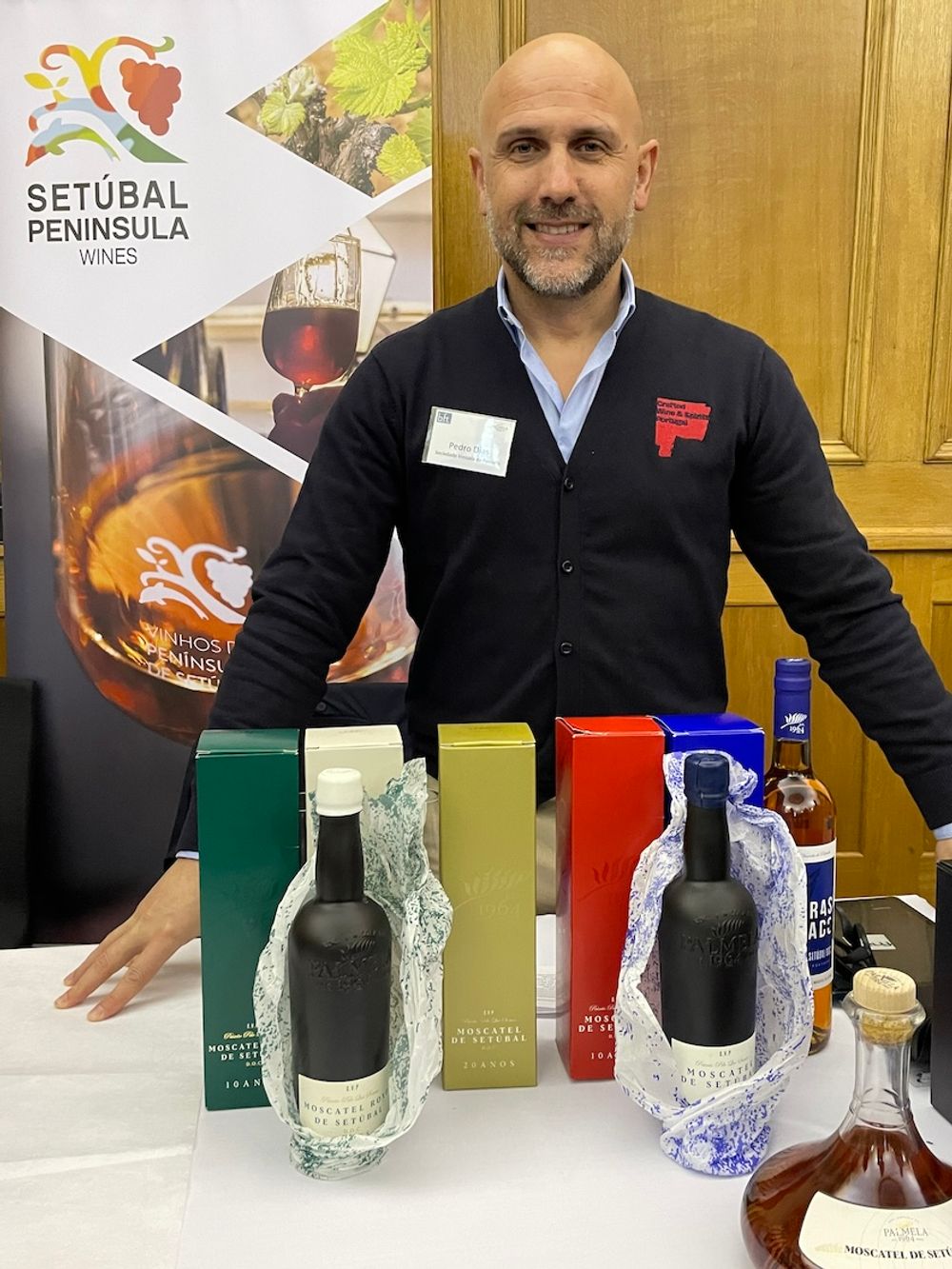
Sociedade Vinícola de Palmela is one of the region's top co-op producers
Sociedade Vinícola de Palmela Moscatel de Setúbal 10 Anos
Sourced from the sandy-clay plains of Palmela (20–30m), this wine is fortified to 17.57% abv with 96% neutral spirit after 4–6 months' maceration. Aged for 10+ years in a mix of used French, American, and Portuguese oak (225–500L), blending 2012–2014 with older elements including 1996 (RS 176.8 g/l, TA 4.56 g/l).
Pale amber with a spicy, caramel-forward nose and palate. Structured and sweet, yet balanced.
RRP £35.00 (50cl) | Seeking distribution
Adega de Palmela Moscatel de Setúbal 10 Anos
From the varied terrain of Palmela (30–100m; 85% clay-limestone, 15% sand), this wine is fortified to 18% abv (77% aguardente) following a 5-month maceration. Aged over 10 years in 540L Portuguese oak with some topping up; the blend is primarily 2011 with contributions from 2008–2010 (RS 190 g/l, TA 5.69 g/l, pH 3.38).
Deep amber, it reveals dried prune and date, briny hints, and spice. The palate is substantial yet fresh, with floral and spirit-driven warmth.
RRP €19.50 (50cl) | Seeking distribution
Venâncio da Costa Lima Rubrica Moscatel de Setúbal Reserva 10 Anos
From Algeruz (75–120m, sandy soils), this wine is fortified to 17% abv (96% wine spirit) after a 6-month maceration. 30 months aged in stainless steel followed by 10 years in topped 225L used French oak (total 12.5 years). The blend spans 2002 and 2012 (RS 197 g/l, TA 4.17 g/l).
True to the house’s floral style – marmalade meets orange blossom, with polished alcohol integration and zesty lift on the sweet finish.
RRP £35.50 (50cl) | Imported by Gauntleys of Nottingham
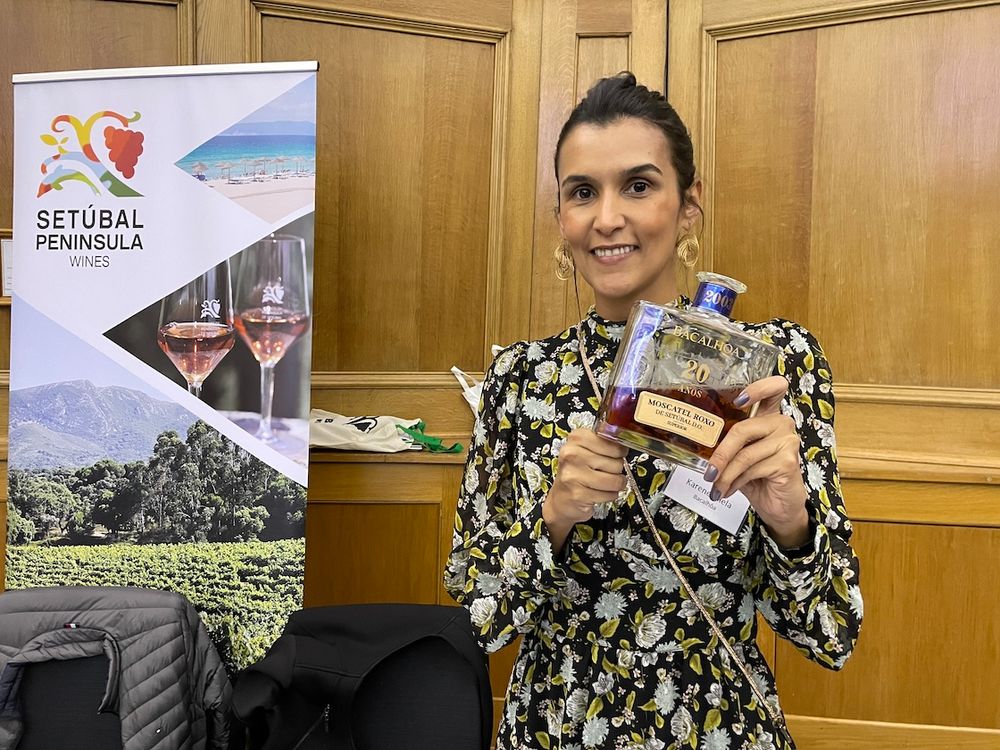
Karene Vilela representing Bacalhôa
Bacalhôa Moscatel de Setúbal Superior 10 Anos D.O. 2009
A single-vineyard 2009 from Serra da Ursa in Serra da Arrábida (190m, clay-limestone), fortified to 20% ABV (77% aguardente) after a 5–6 month maceration. Uniquely aged for 15 years in used malt whisky and red wine barrels (200–300L) under estufa conditions (RS 223.3 g/l, TA 7.8 g/l, pH 3.25).
Powerful and complex: salted caramel, smoky nut, and rancio define the profile, offset by orange peel freshness and razor-sharp acidity.
RRP €22.99 (75cl) | Imported by Ehrmanns

